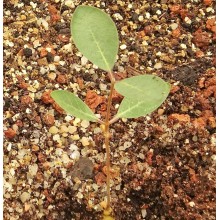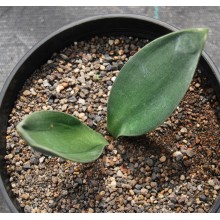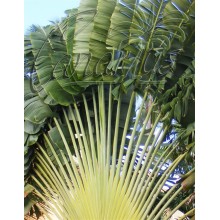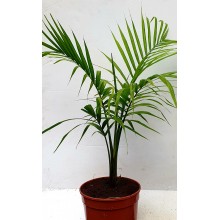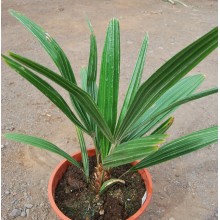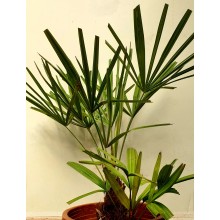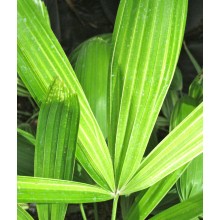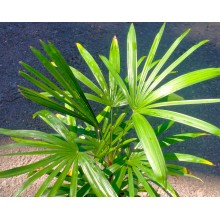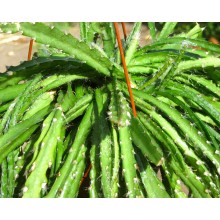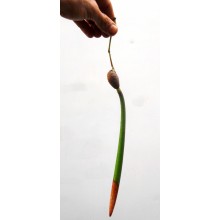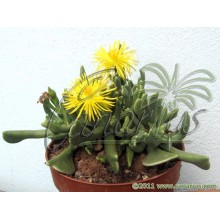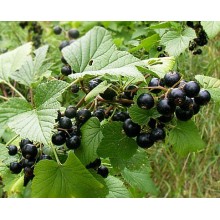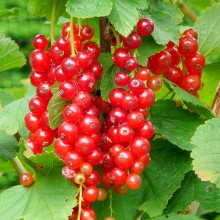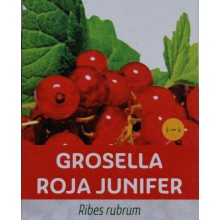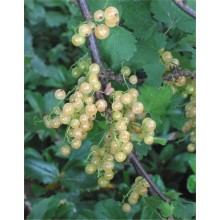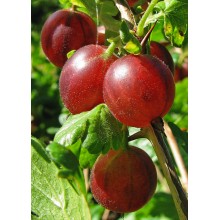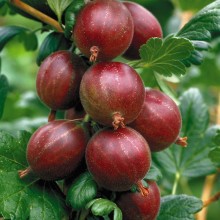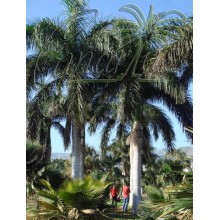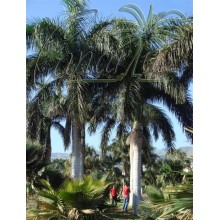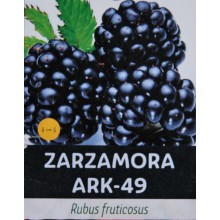Plantas generales Hay 1882 productos.

Si te gustan las plantas exóticas, acabas de llegar al lugar correcto. Canarius ofrece plantas exóticas difíciles de conseguir, que raramente se encuentran en tiendas de jardinería. Nuestra tienda tiene especies naturales, así como híbridos poco frecuentes. Ofrecemos plantas exóticas procedentes de las Islas Canarias.
Los pedidos se envían a cualquier lugar de Europa y también a todo el mundo. Los paquetes llegarán a su casa en pocos días después de ser enviados (tenga en cuenta que también necesitamos algunos días para el procesamiento). No dude en contactar con nosotros si tiene alguna pregunta.
Subcategorías
-
Suculentas
Los desiertos y las áreas secas son el hogar de las plantas más interesantes. Canarius ofrece una selección creciente de plantas suculentas de la máxima calidad, ya que han sido cultivadas al aire libre, bajo el pleno sol de las Islas Canarias.
Las suculentas o "plantas crasas" son especies que retienen agua, que están adaptadas a las condiciones de sequía. Estas plantas almacenan succum (jugo, agua) en sus hojas, tallos o raíces, y con frecuencia muestran un aspecto grueso y carnoso.
-
Exóticas
Las plantas exóticas son especies originarias de otras partes del mundo y que normalmente, tienen un carácter ornamental, una vegetación exuberante, con flores coloridas, formas inusuales... Aquí puede encontrar una gran variedad de plantas exóticas: desde bromelias y heliconias, hasta palmeras y plantas de interior.
Las plantas exóticas no tienen un uso específico. Los coleccionistas compran este tipo de plantas por su rareza, para decoración interior o exterior, en función de sus características. -
Frutales y Medicinales
Los árboles frutales, las hierbas y las plantas medicinales nos permiten mejorar nuestra salud y alimentación. En esta sección, cada tipo de planta tiene efectos saludables, tanto los frutales (Feijoa, piña, Fina de Jete...), como plantas para la salud, como Graviola, Aloe vera, Callisia fragrans...
En el metabolismo normal de todos seres vivos, el organismo produce algunas sustancias a partir de los nutrientes presentes en el entorno; algunos de estos químicos son parte del proceso en todo (o casi todo) tipo de especies. Normalmente, los componentes útiles están concentrados en algunas de sus partes: hojas, semillas, flores...
¡Encuentre su planta saludable y cómprela online!
-
Especiales
En canarius.com tratamos de ir más allá de los límites en el campo de la botánica. En nuestra tienda en línea tratamos de facilitar la compra de plantas de cualquier parte del mundo. Por eso, cultivamos desde las especies más comunes hasta las plantas más especiales, como podrá ver en esta sección.
-
Raphionacme lanceolata
Raphionacme lanceolata
Caudex-forming asclepiad with scrambling stems. It builds a sub-spherical caudex, up to 35 cm in diameter. The velvety stems grow up to 50 cm long and spread horizontally. Leaves are also more or less densely velvety on both surfaces
26,00 € -
Rauhia multiflora
Rauhia multiflora
South american xerophytic bulb, with large, remarkable succulent leaves. The bulb is coated by papery brown sheaths and holds 1-4 leaves, but most often a pair of two. These are beautifully channeled, ovate-rounded, tongue-like. held on wide petioles.
12,30 € -
Ravenala madagascariensis
Ravenala madagascariensis
h= 40-60 cm - Cont. 12 cm. The famous "Traveller's tree" of Madagascar is an icon of tropical gardening of all times. It is a palm-like tree holding a crown of majestic, large banana-leaves, arranged as a giant fan. Flowers are strelitzia-like.
68,00 € -
Ravenea rivularis
Ravenea rivularis
Popular feather palm native to river borders of Southern Madagascar, easily grown in the Mediterranean.
53,00 € -
Rhapidophyllum hystrix
Rhapidophyllum hystrix
The needle palm is the cold-hardiest of all palms. It is a clumping, short fan palm, with fibrous trunks, armed with long black spines. Leaves are dark green and glossy .
72,00 € -
Rhapidophyllum hystrix - Specimen
Rhapidophyllum hystrix - Specimen
8 years old, branched. h= 80 cm - Son h= 35 cm. The needle palm is the cold-hardiest of all palms. It is a clumping, short fan palm, with fibrous trunks, armed with long dark spines. Leaves are dark green and glossy.
288,00 € -
Rhapis excelsa cv. Koban Nishiki - Variegated
Rhapis excelsa cv. Koban Nishiki - Variegated
Clustering dwarf bamboo-like palm suitable as a house plant. Rhapis robusta is a new dwarf Rhapis from wet forests of southern China. The variegated clone of Rhapis Koban is different from most Variegated Rhapis. Its shorter leaves show no variegated stripes, while they boost a diffuse white tone reminiscent of Aspidistra Asa Ahi.
56,00 € -
Rhizophora mangle - Mangrove Tree
Rhizophora mangle - Mangrove Tree
2 years old potted plant. This surprising tree that grows in sea water, forming thick stilt roots at the base.You can keep it for years in a bucket with soil and fresh water, as it does not really need any salt to grow. It will branch and form stilt roots and set fruits even in a large pot. Our plants descend from the populations in Subtropical Florida,...
48,20 € -
Rhombophyllum rhomboideum
Rhombophyllum rhomboideum
NEW! - Branched plant, Cont.= 8,5 cm. Grows in open limestone gravely patches in the subtropical thicket vegetation areas around Port Elizabeth and Uitenhage in So.Africa. The area has mild coastal temperatures and both summer and winter rainfall.
10,30 € -
Ribes nigrum 'Titania'- Blackcurrant
Ribes nigrum 'Titania'- Blackcurrant
It stands out for its high harvest yield and its large bunches. Its production is during the month of July but it can vary according to the climatic zone.
36,00 € -
Ribes rubrum 'Roja junifer'
Ribes rubrum 'Roja junifer'
Variety of red fruit with clusters and berries of good size. Mild, acidulous and very aromatic flavor. Vigorous and very productive plant. Thanks to its less cold requirement it can be grown in all areas. Early maturing, early June.
28,50 € -
Ribes uva-crispa 'Hinnonmäki Röd ' - Gooseberry
Ribes uva-crispa 'Hinnonmäki Röd ' - Gooseberry
Hinnonmäki is a red gooseberry which is high-yelding and vigorous. It is very good for the hobbyist grower as it never fails. It gives a fake flowering in spring and then it flowers again to give ripe fruits in July
29,50 € -
Roystonea regia - LARGE
Roystonea regia - LARGE
The height of these cuban royal palms is about 2 m, rootbound in pots, with bases of 5-8 cm. We will cut or bend the leaves to a total height of 90 cm and it will resprout back in about 2 months, taller than before !
61,00 € -
Roystonea regia - Palmera Real Cubana
Roystonea regia - Palmera Real Cubana
h= 40-60 cm - Cont. 12 cm. The Cuban Royal Palm is one of the most beautiful of all palms. Native to the savannas and open forests of Cuba and surrounding territories.
43,50 € -
Rubus fructicosus 'ARK-49'
Rubus fructicosus 'ARK-49'
These plants produce very juicy giant blackberries with a truly spectacular flavor. In addition, thanks to its double harvest, you can get fruit from spring to late autumn, depending on the climatic zone.
34,50 €
En estos momentos tenemos pocos productos en esta categoría Plantas generales




















